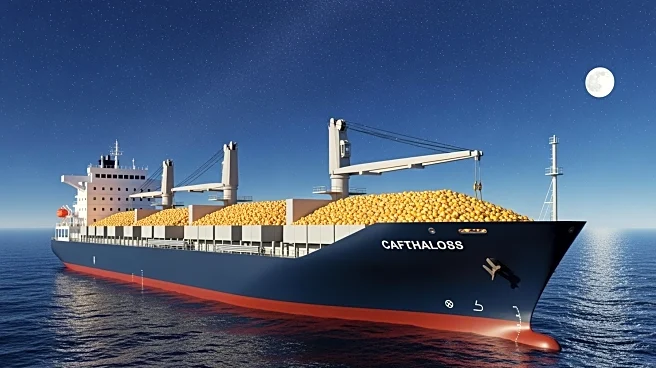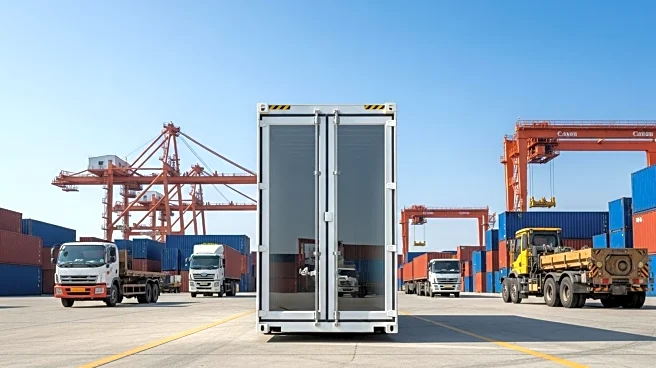What's Happening?
The Richards Bay and Saldanha Bay rail corridors in South Africa are undergoing a revival aimed at improving mining efficiency. A request for information on public sector participation was issued in May,
with private investment proposals expected by 2029. These corridors are crucial for the coal and iron-ore industries, which are vital to South Africa's export economy. The revival is expected to enhance production capacity, reduce operational costs, and attract foreign investment. The rail corridors will improve logistical operations for mining activities, boosting the country's GDP and creating employment opportunities.
Why It's Important?
The revival of these rail corridors is significant for South Africa's mining sector and overall economic growth. Reliable rail logistics are essential for maintaining global competitiveness in the iron-ore and coal markets. The improvements will not only benefit the mining industry but also spur growth in other sectors, such as manufacturing. The initiative highlights the importance of infrastructure development in supporting economic stability and attracting foreign investment. The collaboration between public and private sectors is crucial for the success of these reforms, ensuring efficient operations and management.
What's Next?
Private investment in rail infrastructure is expected to play a key role in the corridor revival. Stakeholders are encouraged to engage in infrastructure rehabilitation efforts to ensure readiness for increased capacity. The private sector's involvement in decision-making processes will enhance operational efficiency and reliability. The initiative aims to add 20 million tonnes of freight annually, contributing to the government's target of 250 million tonnes by 2029. The success of these efforts will depend on effective collaboration among government, mining companies, and private sector participants.
Beyond the Headlines
The revival of rail corridors in South Africa underscores the importance of public-private partnerships in infrastructure development. The initiative may lead to ethical and legal considerations regarding resource management and investment agreements. Long-term implications include increased competitiveness in global markets and the potential for South Africa to become a key player in the mining industry. The project highlights the need for sustainable development practices and the role of infrastructure in supporting economic growth.











